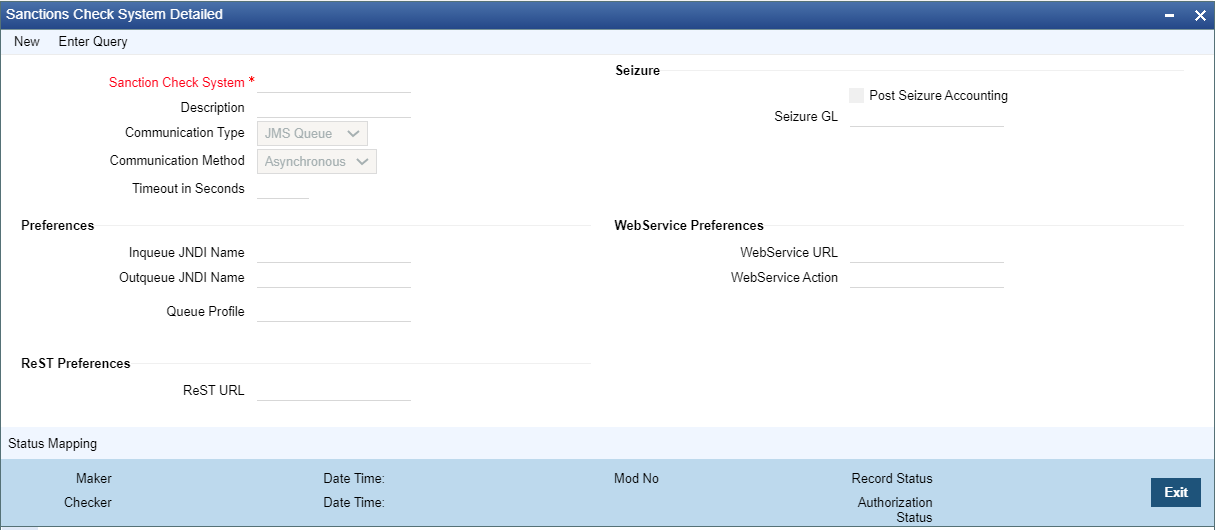- Payments Core User Guide
- Payment Maintenance
- External Systems Maintenances
- Sanction Check System
Sanction Check System
The Sanction Check System screen allows users to maintain the external system
details to which the sanction request are to be sent with transaction party
details.
- On Homepage, specify PMDSNCKM in the text box, and click next arrow.Sanction Check System Detailed screen is displayed.
- Click New button on the Application toolbar.
- On Sanction Check System Detailed screen, specify the fields.For more information on fields, refer to the field description below:
Table 2-3 Sanction Check System Detailed - Field Description
Field Description Sanction Check System Specify the external sanction check system. Description System displays a brief description on the sanction check system. Communication Type Select Communication Type from the following: - JMS Queue
- Web service
- ReST service
Communication Method Select Communication Method from the following: - Synchronous
- Asynchronous (Default)
Note:
- For sanctions interface, support Web services/ReST services works in asynchronous mode.
- External JMS calls are supported in asynchronous mode only.
Seizure -- Post Seizure Accounting Check this box to indicate that seizure accounting entries to be posted on SC Seizure. Seizure GL Specify the required Seizure GL from the list of values. Preferences -- Inqueue JNDI Name Specify the name for Sanction response queue configured in Application server. Outqueue JNDI Name Specify the name for Sanction request queue configured in Application server. Queue Profile Specify the Queue Profile from the list of values. All the valid queues are listed here. The Queue Profiles defined in the 'PMDQPROF' screen are listed here. The profile details defined are linked here to post the request and receive the responses respectively for the Sanction check system.
WebService Preferences -- WebService URL Specify the WebService URL. WebService Action Specify the WebService Action. ReST Preferences -- ReST URL Specify the ReST URL.
